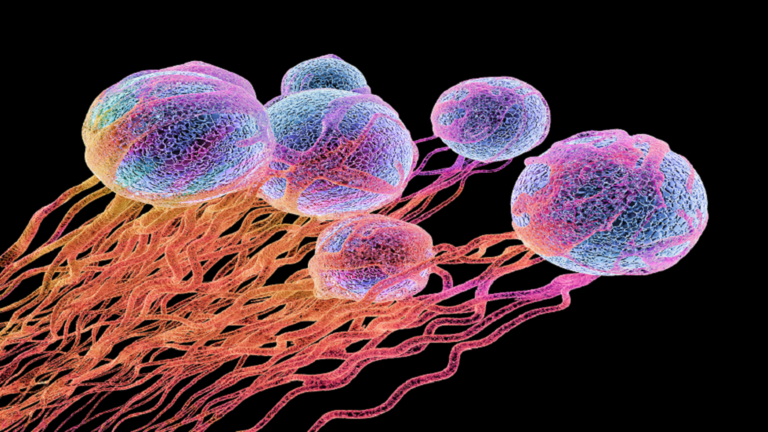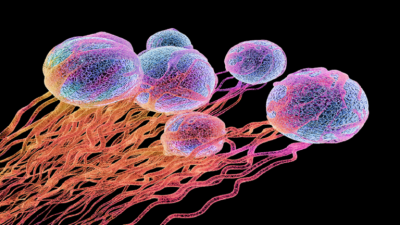A study suggested that consuming fish twice a week might increase the risk of developing lethal forms of skin cancer. Scientists analyzed skin cancer diagnosis rates among adults who consumed an equivalent of 300 grams of any type of fish each week, and compared them to participants who consumed much less, with some not eating any at all. The results showed that individuals adhering to official recommendations, which state that a healthy diet includes at least two servings of fish weekly, had up to a 20% higher risk of cancer. American academics indicated that this might be attributable to carcinogenic pollutants in fish. However, other independent experts stated that fish remains an essential part of a healthy diet and there is no need to stop eating it.
Researchers from Brown University studied data from 491,367 adults who provided dietary information in the mid-1990s, all of whom were in their sixties at the study's onset. Participants were questioned about how often they consumed fried and non-fried fish and tuna over the previous year, as well as their portion sizes. The academics then tracked new skin cancer cases among participants over 15 years, using data obtained from cancer registries. The results, published in the journal "Cancer Causes and Control," indicated that 5,034 individuals developed malignant skin cancer during the study period. Nearly all stage 1 cancer patients survive, but the survival rate drops to just three out of ten for those in stage 4.
Approximately 3,284 developed abnormal cells in the outer skin layer—known as stage 0 melanoma or in situ melanoma (sometimes referred to as precancerous). The team found that individuals whose usual daily fish intake was 42.8 grams, equivalent to about 300 grams per week, were 22% more likely to develop malignant skin cancer compared to those with only 3.2 grams daily. Additionally, those consuming more fish had a 28% increased risk of developing stage 0 skin cancer. The study indicated that these findings did not apply to fried fish; the risk was observed only among adults who ate non-fried fish, which the NHS considers healthy options.
The study's author and dermatologist Dr. Eunyong Cho stated that the team's findings "identified a correlation that requires further investigation." He noted, “We expect that our results may be attributed to contaminants in fish, such as polychlorinated biphenyls, dioxins, arsenic, and mercury. We acknowledge that our study did not investigate the concentrations of these pollutants in the participants' bodies, thus further research is needed to confirm this relationship.”
The researchers accounted for factors that could influence the results, including weight, diet, alcohol consumption, smoking, and family history of cancer. They also recorded average UV levels in the participants’ local areas to consider sun exposure—a known risk factor for skin cancer. However, they did not take into account other major risk factors for skin cancer, such as the number of moles, hair color, history of severe sunburns, and whether individuals engaged in sunbathing or used sunscreen. The average fish intake recorded at the beginning of the study may not represent how much people eat over their lifetimes.
Dr. Michael Jones from the Institute of Cancer Research in London, who did not participate in the study, commented that the results were "statistically significant and thus unlikely to be coincidental." However, he pointed out that individuals eating more non-fried fish and meat might have other lifestyle habits that increase skin cancer risk. He emphasized that further research is necessary to confirm these findings and added, “A balanced and generally healthy diet should include fish, and the results of this study do not alter this recommendation.”
At the same time, experts at Loma Linda University in California warned that men consuming 430 grams of dairy products daily are more likely to be diagnosed with prostate cancer than those consuming just 20 grams—a half-cup of milk weekly. Researchers studied dairy intake among over 28,000 men in the U.S., all of whom were initially cancer-free. They collected dietary information through questionnaires and regular phone calls. The team used cancer registry records to identify patients who developed prostate cancer after eight years, diagnosing approximately 1,254 individuals. The results were published in the American Journal of Clinical Nutrition. However, the team stated that cheese and milk consumption was not associated with prostate cancer.
The UK Nutrition Society recommends that Britons consume three servings of dairy products daily, with one serving equivalent to one cup of semi-skimmed milk, 150 grams of plain yogurt, or 30 grams of cheese. No connection was found between non-dairy calcium sources—such as nuts, seeds, vegetables, legumes, fruits, and fortified cereals—and prostate cancer. They noted that this suggests other substances in dairy products, rather than calcium, may be to blame. The researchers did not find an association between increased dairy intake and an equal increase in prostate cancer risk. Previous studies have indicated that dairy consumption raises blood levels of a hormone called insulin-like growth factor-1, which is believed to increase the risk of certain types of cancer.




